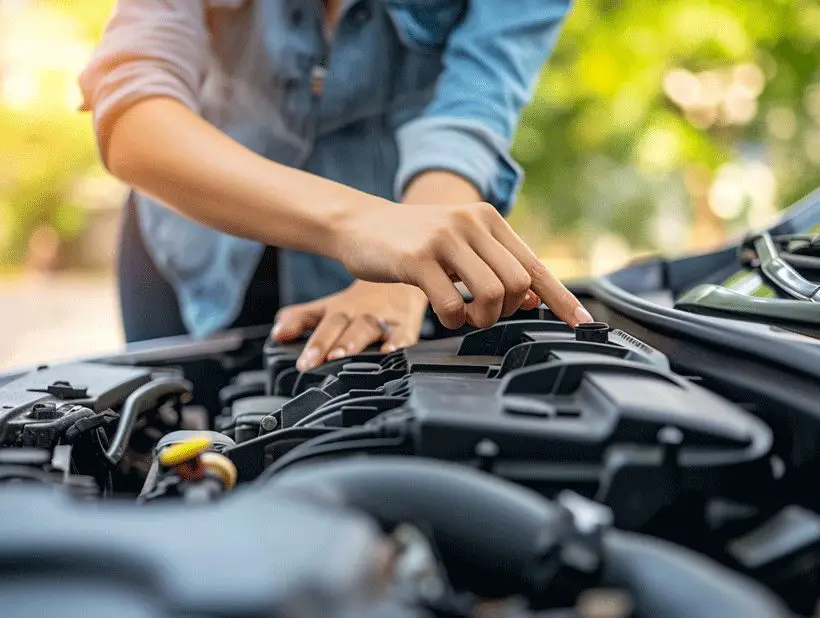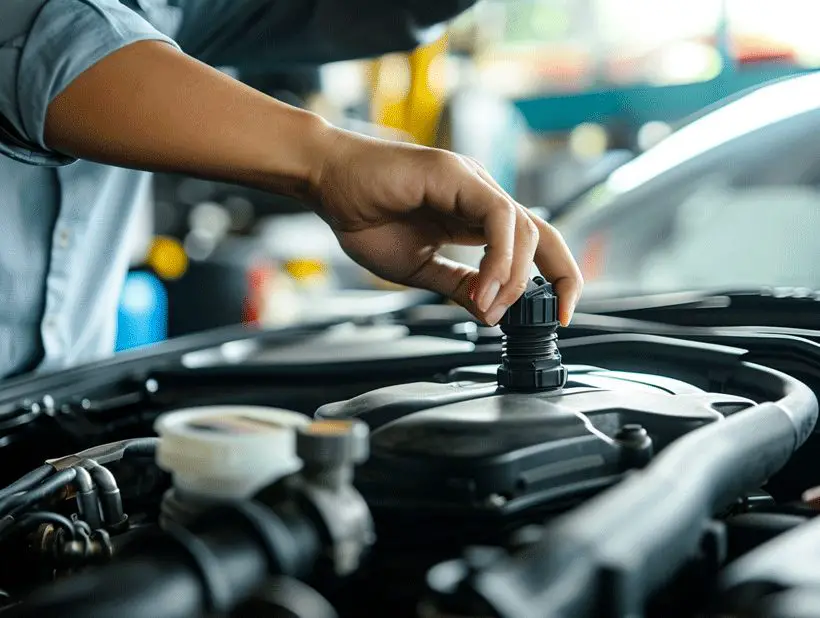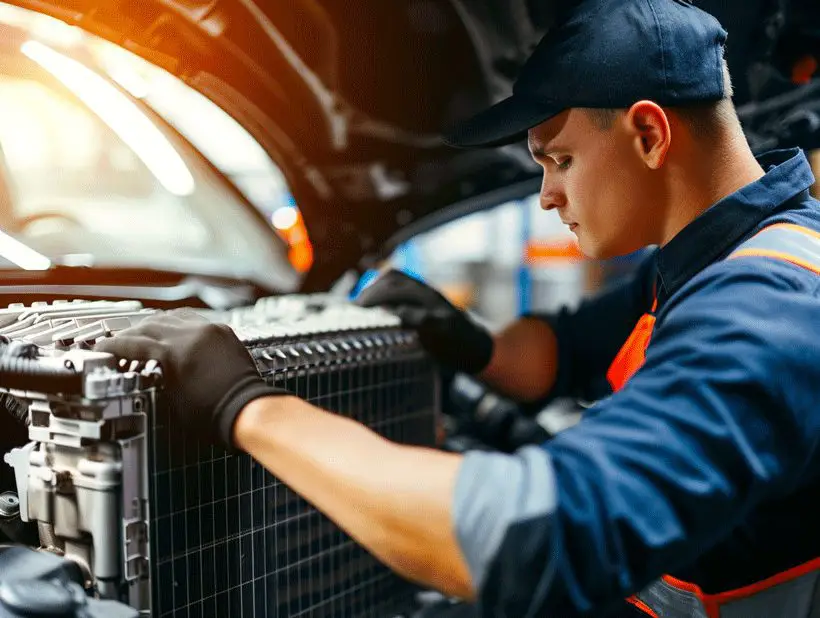Maintaining your car’s cooling system is crucial for keeping your engine at the right temperature. I’ve learned that a well-functioning radiator and the right coolant level are key to avoiding overheating and costly repairs. That’s why it’s essential to know how to check these components regularly.
I’ll walk you through the simple steps to inspect your radiator and coolant level, ensuring your vehicle runs smoothly. Whether you’re a seasoned car enthusiast or a newbie to automotive care, you’ll find these tips helpful for your routine maintenance.
Why is Checking Your Radiator and Coolant Level Important?
Maintaining a properly functioning cooling system is pivotal for the health of my car. The radiator and coolant are at the heart of this system. Their role cannot be overstressed; they keep the engine from overheating and, ultimately, a breakdown. I’ve learned that regular checks can save me from the inconvenience and the possible heavy costs of repairs down the line.

Here’s why I’m so diligent about checking these components:
- Overheating Prevention: Coolant absorbs heat from the engine and dispels it through the radiator. Low coolant levels can lead to insufficient cooling, causing the engine temperature to rise and potentially lead to overheating. This can cause significant engine damage.
- Corrosion Prevention: Coolant contains anticorrosive properties. Without a sufficient level, the radiator and other components might corrode, leading to leaks and system failures.
- Efficiency Maintenance: An engine running at ideal temperature is more efficient. This contributes to optimum fuel consumption and power output.
- Longevity of Vehicle: Regular monitoring of the coolant level and radiator condition can extend the lifespan of my car by ensuring the engine and its related parts are not subjected to excess stress due to overheating.
To put things into perspective, let’s have a look at some statistics that illustrate the importance of cooling system maintenance:
| Consequence | Percent Increase Due to Neglect |
|---|---|
| Engine Repairs | 50% |
| Roadside Breakdowns | 35% |
| Fuel Consumption | 20% |
Lack of maintenance can lead to an increment in engine repairs, roadside breakdowns, and even a rise in fuel consumption due to decreased efficiency.
I ensure that my radiator and coolant are in check by inspecting for leaks, assessing the coolant level and quality, and by being attentive to changes in engine performance. Staying ahead of the game means I catch issues before they escalate, keeping my vehicle reliable and ready to perform.
Tools and Materials Needed for Checking Your Radiator and Coolant Level
When I’m about to check the radiator and coolant levels in my car, there are a few essential tools and materials I make sure to have on hand. These not only make the task easier but also ensure that I can do a thorough and safe job.
Firstly, I always have a trusty radiator coolant tester. This handy tool helps me determine the concentration and condition of the coolant. It’s a must-have because the right coolant mixture maximizes the system’s efficiency and protects against extreme temperatures.
Another fundamental item is a pair of safety gloves. Coolant can be toxic, and spills may happen, so I make sure to protect my hands. Also, the engine and radiator can be very hot; gloves provide an extra layer of safety against burns.
Here’s the full list of what I gather before getting started:
- Radiator coolant tester
- Safety gloves
- Clean cloth or rag
- Funnel (for adding coolant if necessary)
- Distilled water (in case I need to dilute the coolant)
- A container for draining (used during a coolant flush)
- Protective eyewear
- Sealable container for used coolant (environmental disposal)
I can’t stress enough the importance of having a clean cloth or rag to wipe off any spillage, check for leaks, and clean the radiator cap and opening before and after checking the level. It helps maintain a clean workspace and prevent debris from entering the cooling system, which could lead to blockages.
Protective eyewear is also non-negotiable. When looking into the radiator or reservoir, there’s always a risk of splashing, and eye protection is key to avoiding any potential accidents.
Lastly, should there be a need for a coolant top-up or change, I ensure I have a funnel to prevent spills and a sealable container to safely dispose of any old coolant. It’s a matter of maintaining my car, while also being environmentally responsible. Remember, improperly disposed coolant can be harmful to the environment due to its toxic nature.
With these items ready, I’m all set to inspect my cooling system, looking out for any signs of wear and tear or unusual changes that might indicate a potential issue.
Step-by-Step Guide on How to Check Your Radiator and Coolant Level
When I’m under the hood, I know that maintaining my car’s radiator and coolant levels is essential for peak performance. Here’s a simple guide I follow to ensure my cooling system is in tip-top shape.

Before You Begin
Remember to let your engine cool for a few hours. Checking the coolant while the engine is hot can result in burns from the steam or hot fluid.
Checking the Coolant Level
First, I locate the coolant reservoir. It’s typically a translucent plastic tank near the radiator. Look for the ‘high’ and ‘low’ markings on the side to assess the coolant level. If the coolant doesn’t reach the ‘low’ marking, it’s time to add more.
- Inspect the Radiator Cap: Carefully remove the radiator cap using a rag to protect my hand, but only after ensuring the engine is cool.
- Check the Radiator Fluid: The liquid should be up to the brim. A low level might indicate a leak.
Adding Coolant
If the level is low, I’ll follow these steps:
- Prepare a mixture of antifreeze and distilled water if needed, usually in a 50:50 ratio.
- Place the funnel at the top of the reservoir to inject coolant without spilling.
- Pour the coolant mixture into the reservoir until it reaches the ‘high’ level mark.
Inspect for Leaks
After topping off, I always check underneath the car for any signs of leakage. This could save me from future breakdowns and costly repairs.
| Common Signs of Coolant System Issues | Possible Causes |
|---|---|
| Low Coolant Level | Leaks in the cooling system |
| Discoloration of Coolant | Rust or impurities |
| Strange Noises | Water pump failure |
Lastly, I make sure to replace the cap securely and wipe away any spills to maintain a clean engine bay. Regularly checking the coolant level and radiator ensures my vehicle runs efficiently and prevents engine overheating.
Remember, even with these guidelines, it’s important to consult your vehicle’s manual for the recommended coolant type and maintenance procedures specific to my car’s make and model.
Signs of a Damaged Radiator or Low Coolant Level
Detecting a faulty radiator or a drop in coolant levels early can save you from potential engine damage. Let’s explore some telltale signs that your cooling system might need attention.
First off, if your vehicle’s temperature gauge is climbing towards the ‘hot’ zone, it’s time to pull over and investigate; this is usually the most immediate indicator of cooling system trouble. Similarly, if you notice your heater isn’t working as efficiently as it used to, it could be due to low coolant levels not properly circulating through the heater core.

Keep an eye out for physical evidence of a problem. A pool of bright green, orange, or pink fluid under your car is a telltale sign of a coolant leak. Coolant has a sweet smell, and if you’re picking up on this odor while driving or after parking, there’s likely a leak that’s allowing the scent to escape.
The presence of steam or a hissing sound coming from the engine bay shouldn’t be ignored either. This could indicate that coolant is leaking onto hot engine parts and evaporating. On the more severe side, if you’re seeing significant discharges of steam, it’s possible that the radiator itself has been compromised.
It’s also essential to look out for discrepancies in your coolant reservoir. If you find that you’re frequently topping off the coolant, it suggests that it’s being lost somewhere in the system. Here’s a quick checklist to visually inspect your cooling system components:
- Reservoir tank levels
- Radiator hoses for bulges or cracks
- Radiator fins for blockages or damage
- Condition of the radiator cap seal
Occasionally, the problem could be due to a faulty radiator cap that isn’t maintaining pressure properly. An inspection can reveal if the spring or seal has deteriorated, requiring replacement.
Lastly, inspect for contaminated coolant. If the liquid in your radiator is murky or has particles suspended in it, it’s a red flag. This could be rust or sediment, indicative of internal corrosion or a failing component within the cooling system. These contaminants can compromise the system’s efficiency and potentially lead to overheating.
By staying vigilant and noting these potential signs, I’m able to take proactive measures to maintain my vehicle’s health. Regular inspections and timely interventions are crucial to ensure my car’s cooling system operates effectively.
Tips for Maintaining Your Cooling System

Maintaining your car’s cooling system is crucial to ensure its longevity and prevent costly repairs. Here’s what I’ve found to be effective in keeping this vital system in tip-top shape:
- Regularly Check Coolant Levels: At least once a month, take a moment to peek at the coolant level. Make it a habit, like checking your oil, to prevent any unforeseen issues down the road.
- Flush the System: Every now and then, your car benefits from a coolant flush. It removes rust and scale deposits and replenishes your system with fresh coolant. Your vehicle’s manual should have a recommended schedule for this.
- Inspect Hoses & Belts: The hoses and belts in your cooling system can become brittle and cracked over time. Look over these components during your routine maintenance checks.
- Watch for Puddles: Keep an eye on the ground where you park. Coolant puddles are a telltale sign of a leak, which could indicate a problem with your cooling system.
- Avoid Overheating: Should your temperature gauge start climbing, it’s better to pull over and let your engine cool down than risk overheating.
| Maintenance Task | Frequency |
|---|---|
| Check Coolant Level | Monthly |
| Coolant Flush | As recommended in vehicle’s manual |
| Inspect Hoses and Belts | With routine maintenance checks |
| Check for Leaks | Regularly when parked |
By following these guidelines, I’ve managed to keep my car’s cooling system functioning properly. Remember, if you’re ever unsure about performing any of these tasks, it’s best to consult with a professional mechanic. They’ll have the expertise to pinpoint issues early on and address them before they escalate. Always refer to your car’s manual for precise information regarding coolant type and specific maintenance routines tailored to your vehicle. Keep up with these practices and your car’s cooling system should continue to operate seamlessly.
Conclusion
Keeping your car’s cooling system in top shape is essential for a smooth-running engine. I’ve walked you through the basics of checking your radiator and coolant level‚Äîa task that’s simpler than most think but crucial for preventing overheating and engine damage. Remember to keep an eye on your coolant levels regularly and tackle any maintenance or issues promptly. By following the maintenance task frequency chart and getting professional help when needed, you’ll ensure your vehicle stays cool under the hood, just as it should. Stay vigilant for any signs of trouble and your car will thank you with consistent, reliable performance.
